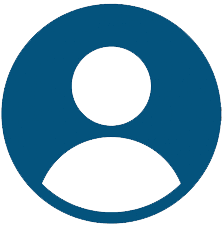Chamomile- Nutrient Profile, Types, Uses, And More

Overview
Chamomile is a daisy-like flowering plant native to Asia, Europe, and North Africa. The flowers emit a pleasant floral fragrance and slightly smell like apple fruit. The name chamomilecomes from the Greek word chamaimelon, which means ground apple. In France, it is called mantazilla, meaning little apple, which describes its aroma. For its amazing flavor profile, chamomile has been used in incense sticks and wine making processes. Other than that, chamomile extracts are widely used in cosmetics and aromatherapy. There are multiple uses of chamomile, but the most popular one of all is the chamomile tea prepared from its flowers. The aromatic flower also has various nutrients that have a good impact on the body and these nutrients are explained below.
Chamomile Nutrition Facts
The nutrient composition of chamomile includes macronutrients like carbohydrates, protein, fats, and fiber. There is a significant amount of protein and fiber in chamomile, but the calorie content is low. It contains nutrients like vitamin C, calcium, copper, zinc, and iron that are essential for the body. This flower also possesses certain active chemical compounds like chamazulene, apigenin, luteolin, beta-carotene and bisabolol. Certain phenolic compounds like tannins, terpenoids, flavonoids, and steroids are also present in chamomile.
Types of Chamomile Flowers
There are various types of chamomile flowers such as German chamomile, Roman chamomile, Yellow chamomile, Moroccan chamomile, and Egyptian chamomile. However, the most commonly grown ones are Roman chamomile and German chamomile.
1. Roman or English Chamomile:
It is a perennial herb that reaches up to one foot tall in height and have gray-green color leaves. This chamomile originated in Southwest Asia, North Africa, Southwest Asia, and the UK. It produces fewer flowers compared to the German type. The Roman chamomile flower contains angelic and tiglic acids, which support health.
2. German Chamomile:
German chamomile is self-sowing annual plant that is native to Western Asia and Europe. It has a prolific number of flowers but this plant is not as invasive as Roman chamomile. This chamomile thrives well in high temperature areas and is known as a drought-tolerant species. There are twenty-nine important components present in this chamomile, but main components are terpene bisabolol and chamazulene.
Amazing Uses of Chamomile
Chamomile is used for flavoring jams, ice cream, candies, and bakery products. It is added to many beverages, including liquers, tea, and energy drinks.Chamomile powder is used in cosmetics like soaps, shampoos, hair conditioners, toners, face packs, serums, and face washes. The oil extracted from this flower is used in perfumes and aromatherapy candles. The dried chamomile flowers are great natural dyes and offer a warm yellow color. Pharmaceuticals like capsules, topical cream, gel, and drops also include chamomile extracts.
The Final Words
Chamomile is an antioxidant-rich herb that comes in powder, capsules, and liquid extract forms. Due to the presence of various nutrients, chamomile powder is directly added to several cuisines and drinks. Its powder is also highly demanded in the textile, food and beverage, pharmaceutical, and beauty industries.
If you want to buy Organic Chamomile Powder online visit these websites (Green Jeeva & Jeeva Organic) for affordable and bulk orders.
Also Know More: Bulk Chamomile Extract: A Star Ingredient in B2B Beauty and Skincare
Know more product- Organic Chamomile Flower TBC
Disclaimer:
The above statements are not intended to cure any disease or comply with any health benefits. This is solely for information purposes. Please consult your doctor/health practitioner before consumption of the product. Although we take efforts to keep our website informative, we do not guarantee any medical benefits.


.jpg)



.jpg)